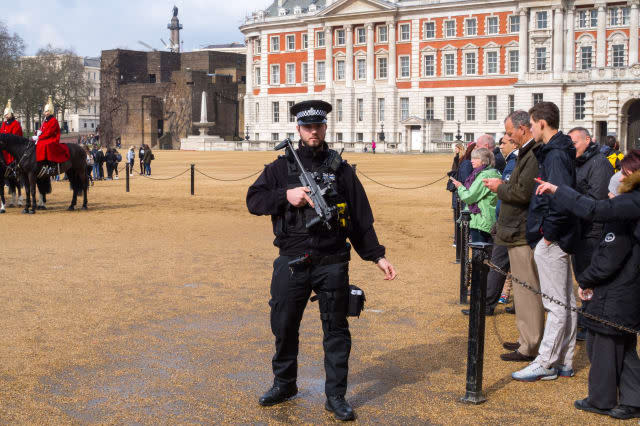Police can now shoot terrorist drivers

Police may have to shoot terrorists who use cars as weapons when carrying out attacks, the national lead for armed policing has said.
Following the attacks in Westminster, Nice and Berlin, the tactics of armed officers in such circumstances will reportedly have to change.
Simon Chesterman of the National Police Chiefs' Council (NPCC) said officers had previously been told not to shoot drivers of moving vehicles because of the risk of potential additional dangers.
According to the BBC, he said: "We've seen some very horrible and different tactics lately involving vehicles and lorries.
"Within our policy, we used to talk about not shooting at a moving vehicle because of the danger we might cause if we fired at a driver.
"But if the vehicle is being used as a weapon in the first place, there aren't many tactics available in relation to stopping it, particularly a very large lorry.
"Driving a vehicle in front of it for example is not going to stop it. So you need to shoot the driver."
Officers now have ammunition to penetrate doors and windows, he added.
Four innocent people were killed on Westminster Bridge when Khalid Masood mounted the pavement in a car and drove into pedestrians on March 22.
Mr Chesterman added: "We have the ability to move much quicker to resolve situations. Previously the approach was to locate, contain and neutralise. Now it is to locate and confront.
"Our tactics are more aggressive."
It comes as the NPCC announced that since last year the number of firearms offices in England and Wales has increased by 640 - largely financed by a £143 million Home Office programme.
The plan is to recruit around 1,500 extra officers in total by the end of next year, across the 43 Home Office forces.
Some of these will specialise in responding to ongoing terrorist incidents.
Mr Chesterman acknowledged that with armed policing being a voluntary role, recruiting, training and retaining officers remained a challenge.
"Officers who serve as part of firearms units are volunteering themselves for an immensely difficult and dangerous role that will put them in harm's way.
"They naturally have concerns about the impact their job could have on their families. They need to know they will be supported in the rare instance that they might discharge their firearm," he said.


